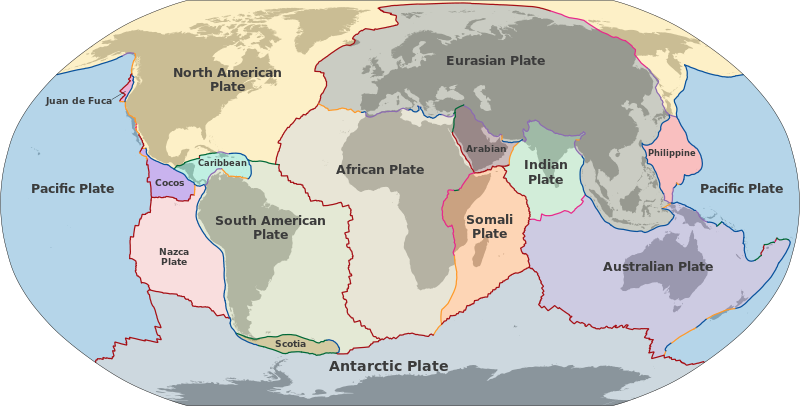Beneath the vast expanse of the Pacific Ocean, an immense, slow-motion geological drama is unfolding. The Pacific plate, one of Earth’s largest tectonic plates, seems to be experiencing an internal tug-of-war, with forces pulling it apart from within. This recent discovery challenges our existing understanding of plate tectonics as well as opens up a new chapter in our quest to unravel the Earth’s dynamic interior.
Internal Weaknesses Revealed
Traditionally, we perceive tectonic plates as rigid slabs gliding across the molten mantle. However, a recent study from the University of Toronto offers a different perspective on the Pacific plate. Researchers identified massive underwater faults, some thousands of meters deep and hundreds of kilometers long, crisscrossing the plate’s interior. These faults suggest that, instead of acting as a monolithic unit, the Pacific plate might be riddled with internal weaknesses, making it susceptible to tearing apart.
The internal tension in the Pacific plate appears to be caused by forces at its edges, where neighboring plates subduct beneath it. As these plates dive, they create a pulling force that ripples inward, fracturing the plate’s interior. This challenges the traditional idea that only plate boundaries cause deformation, highlighting the importance of internal forces in shaping tectonic plates.
Implications for the Future
Internal fracturing in the Pacific plate may affect geological processes, potentially causing heightened volcanic activity and smaller, scattered earthquakes. Over millions of years, this tearing may create new subduction zones and form entirely new tectonic plates, revealing the dynamic nature of Earth. Further research is required to fully understand the implications of these internal fractures on geological processes and future tectonic landscapes. Despite its calm appearance, the Pacific holds a silent, intriguing story of tectonic transformation beneath its surface, emphasizing the dynamic nature of Earth.
Nidhi is a gold medalist Post Graduate in Atmospheric and Oceanic Sciences.







